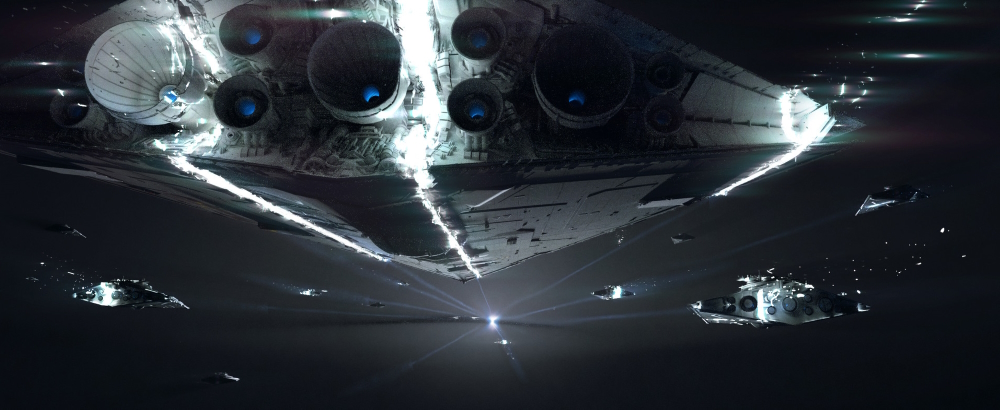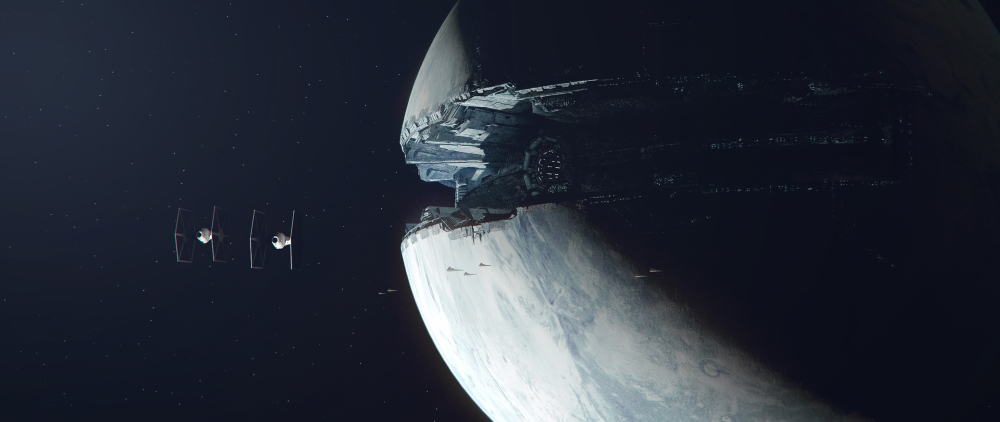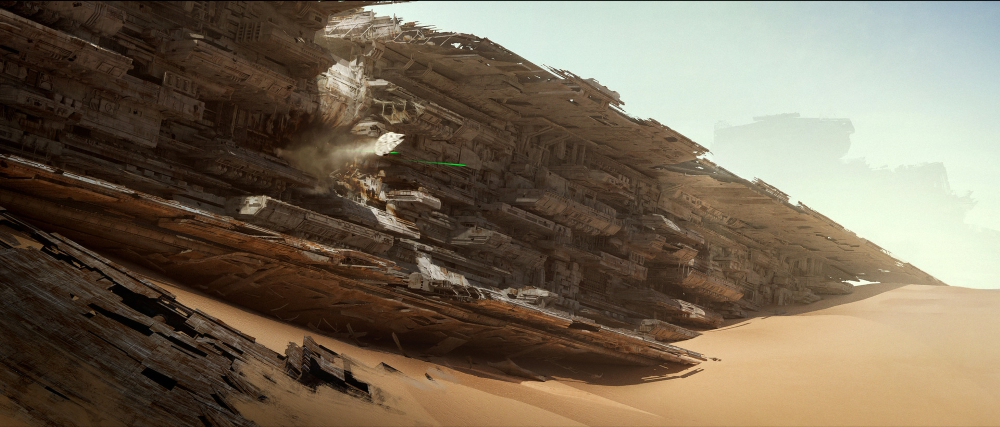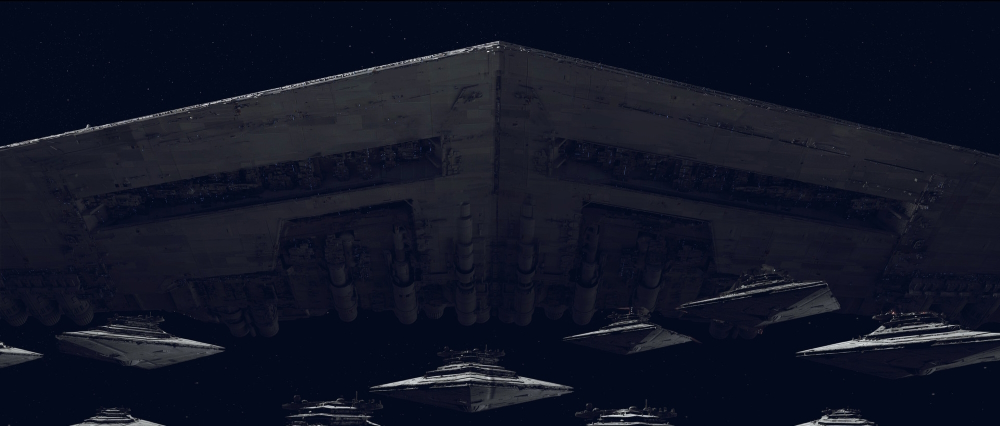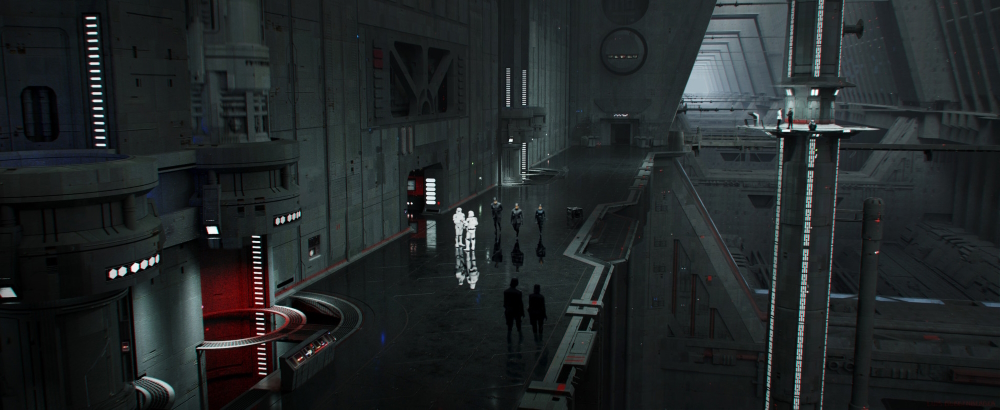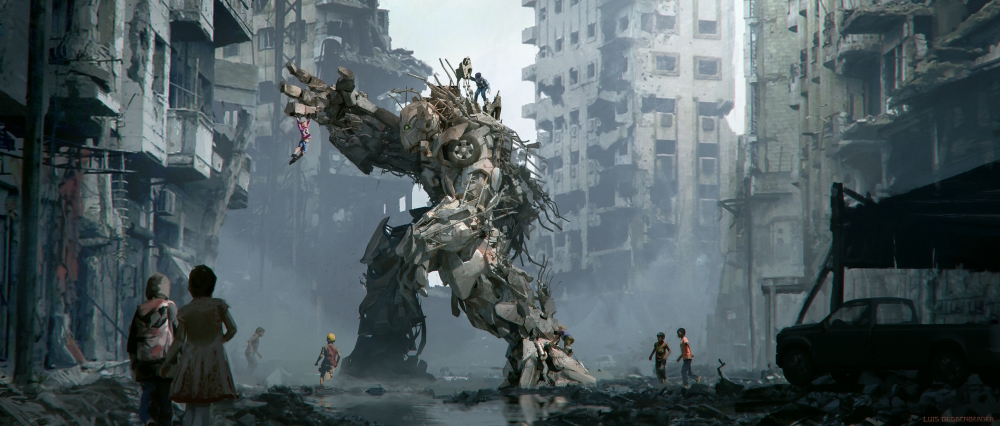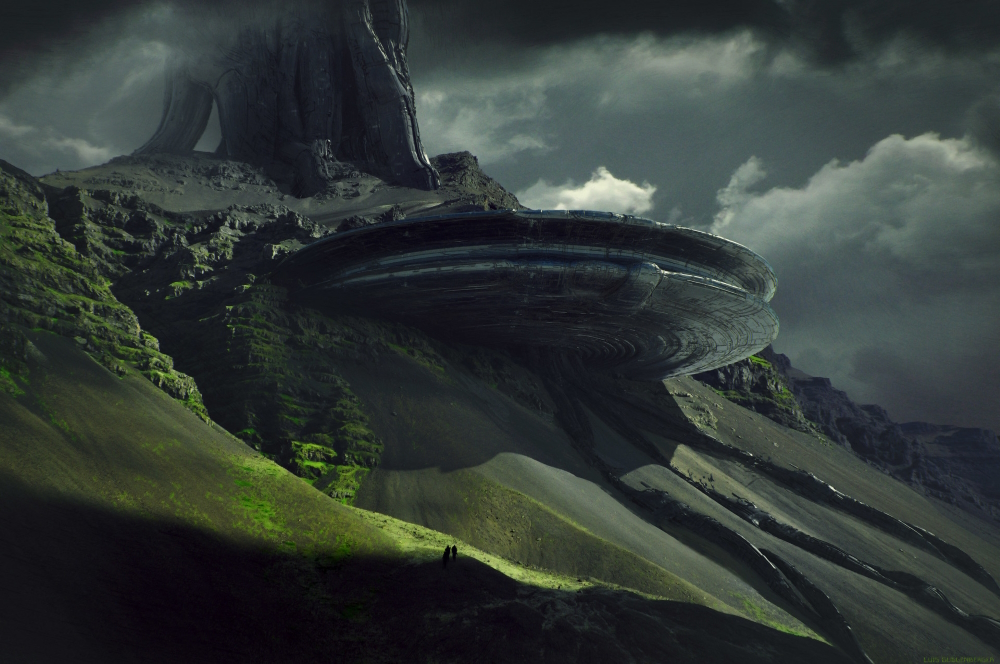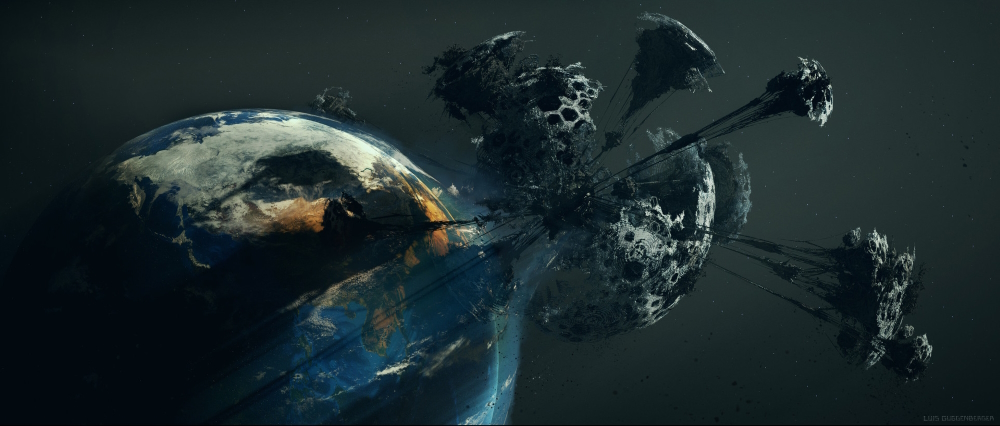Luis Guggenberger
(Star Wars) Senior Concept Artist / Visual Effects / Art Director
Germany
‚Stars Wars‘ (Han Solo: A Star Wars Story, Episode VIII: The Last Jedi, Episode VII - The Force Awakens).‘Transformers: The last Knight‘. ‚The Mummy‘. ‚King Arthur: Legend of the Sword‘. ‚Independence Day: Resurgence‘. `James Bond: Spectre‘. ‚Pixels‘. Marvel’s ‚Avengers‘ (Age of Ultron, The Return of the first Avenger). ‚Captain America: The Winter Soldier‘. ‚Iron Man 3‘. ‚White House Down‘. The mentioned movies are worldwide blockbusters. The person who created their world-building artwork and part of the spectacular visual effects is namely among the world's best in its field but unknown to the wide public, despite that his mindblowing works secure that million of viewers can dive into unknown spheres and hold their breath!
Luis Guggenberger
(Star Wars) Senior Concept Artist / Visual Effects / Art Director
Germany

This is surely a very special individual case and usually happens only in movies: you’re in your mid-twenties at the beginning of your professional and get a surprising call from the assistant of the US’ 15th highest-crossing director of all time! But that’s exactly what has happened to Luis Guggenberger in 2014.
The young man from Bavaria (* 21 June 1988 in Munich) had studied industrial design at the University of Applied Science in Munich and finished it later on with a Bachelor of Art. After his four months internship at Trixter Film GmbH the renowned visual effects studio offered him a permanent employment as a Concept Artist in November 2011.
„Concept art is a form of visual art used to convey an idea for use in films, video games, animation, comic books, or other media before it is put into the final product. Concept art usually refers to world-building artwork used to inspire the development of media products, and is not the same as visual development art, though they are often confused. Concept art is developed through several iterations. Multiple solutions are explored before settling on the final design. Concept art is not only used to develop the work but also to show the project's progress to directors, clients, and investors. Once the development of the work is complete, concept art may be reworked and used for advertising materials“ (Wikipedia).
The professional career of the exceptional talent quickly took off. His works on Marvel’s ‚The Avengers‘ and ‚Cloud Atlas‘ impressed the employer. Within half an year Luis Guggenberger became Lead Concept Artist. In August 2012 the man, who calls himself „an architect for movies“, founded the Art Department at Trixter and was obviously appointed its head.
Roland Emmerich must have become attentive to the exceptional talent in his native Germany that had already helped designing the armor for ‚Iron Man 3‘. Before Luis Guggenberger knew it he was in Hollywood talking to the famous „master of disaster“-director in his villa regarding ‚Independence Day: Resurgence‘. The science fiction action film grossed $389 million worldwide at the box office against its $165 million budget. It is on the reference list of Mr. Guggenberger as well as ‚Pixels`, ‚Avengers: Age of Ultron‘, 'The Return of the first Avenger' or 'White House Down'.
In June 2015 the German took another step on his career ladder as Senior Concept Artist at the London branch of Industrial Light & Magic. This American award-winning motion picture visual effects company was founded by George Lucas of 'Indiana Jones' and 'Star Wars' fame. The 2010 documentary on „the incredible work of ILM and how they revolutionised the way we see film with the introduction and advances of CGI or Computer Generated Image“ (imdb.com) is appropriately titled ‚Creating the Impossible‘. For the next roundabout two and a half years the German became an integral part of the realisation of ‚James Bond: Spectre‘, ‚Star Wars: The Force Awakens‘, ‚The Mummy‘, ‚Star Wars: The Last Jedi‘, ‚King Arthur‘, ‚Transformers: The Last Knight‘ and ‚Han Solo: A Star Wars Story‘.
November 2017 saw him quitting one of the most sought-after positions in the film industry and setting up his own company for working as a freelancer from January 2018 onwards. This step into independence wasn’t risky considering his references as well as skills: art direction, character design, color design, costume design, creature design, digital matte painting, environment design, mood paintings, product design, prop design and transportation design. Besides numerous jobs like ‚Captain Marvel‘ or ‚Dolittle‘ this down-to-earth expert nowadays cooperates with the chair of visual effects at the University of Television and Film (HFF) in Munich for the development of photorealistic people.
Luis Guggenberger lives and works in Munich (Germany).
Interview April 2023
Creating the impossible: realising imaginary visions into spectacular pictures for the big screen
INTUITION/IMAGINATION
How does intuition present itself to you – in form of a suspicious impression, a spontaneous visualisation or whatever - maybe in dreams?
Intuition is the feeling when you hit the ball and you know it’s going to be a goal.
Will any ideas be written down immediately and archived?
Either I write it down and lose it
or don’t write it down and forget it.
I only remember ideas I sketched or modelled.
Ideas I spent time with.
?: How do you come up with good or extraordinary ideas?
Not sure I had any extraordinary ideas so far. A good mix of experience, research, experimentation - or simply time spent on finding the best solution.
?: Do you feel that new creative ideas come as a whole or do you get like a little seed of inspiration that evolves into something else and has to be realized by endless trials and errors in form of constant developments up until the final result?
Creativity goes weird ways, which I can’t put into a logical structure. I’ve seen both ways successful. A little seed that evolves happens more often.
What if there is a deadline, but no intuition? Does the first fuel the latter maybe?
Tight deadlines mean no time for experimentation nor research. This usually results in something very predictable. I fall back on solutions used in the past, since there is no time to come up with anything new. I don’t need deadlines as a form of motivation.
INSPIRATION
What inspires you and how do you stimulate this special form of imaginativeness?
Pictures, stories, memories in the first place, but also discussions and exchanges with other beings - humans mostly. Science, Philosophy, Physics, Nature - everything adds to the library in our head which we use to compute ideas.
?: How do you filter between ideas worthwhile pursuing and bad ones that you just let go of?
Designing is a constant yes-no-game. Every move excludes all other possibilities. If you don’t want to be trapped in an endless stroke-undo-cycle, you need a vision and stick to it until a lucky accident results in an even better vision - which you again stick to.
Has it to appeal to you primarily or is its commercial potential an essential factor?
My professional work has to appeal to my client in the first place which equals more often than not commercial potential. My career was driven by appealing to an audience, which I still really enjoy.
My personal work is something else. I rarely publish it and there is no commercial intention.
Do you revisit old ideas or check what colleagues/competitors are up to at times?
I revisit old ideas now and then if they remained interesting. I check what colleagues/competitors are up to occasionally, but I’m not an active follower on any platform.
CREATIVITY
Which time/place/environment suits your creative work process the best (tranquillity or pressure) and which path do you take from theory/idea to creation?
Any time/place/environment results in different ideas. In theory the best would be to go through all different states of mind, gather and pick the best idea. Being tired or fresh, exercising or being lazy on the couch - it all generates different ideas for the better or worse. Finding a solution happens often very unexpectedly throughout the day and not necessarily always “on the toilet”.
Once I have an idea in mind, I usually start building it straight away in 3D. I used to sketch in 2D, but nowadays I feel confident enough to skip this step. I use SideFx Houdini mostly.
What is better in the realization process: speed and force creativity i.e. grasp the magic of the moment, or a slow, ripening process for implementation/elaboration?
My job is all about adaptivity. Depending on the time/budget/tone/team speed and force or a slow process can be better. If you join the project late and most of the budget is already burned on a slow process that leads nowhere, you are better off trying bold fast ideas.
?: Do you have any specific strategies you use when you are feeling stuck creatively?
I talk about it with other artists. By explaining the problem to someone else I tend to realise what the solution is. Whenever I feel disoriented while working I take a step back, do research and try to self-reflect whether I’m still on the right path.
How important are self-doubt and criticism (by others) during such a process i.e. is it better to be creative on your own, only trust your own instincts, or in a team?
I guess it depends on your goal. If you are aiming to satisfy a broader audience it makes sense to listen to other opinions. I like to know other people's thoughts. It helps to get a new perspective on your work. In the end it’s still up to me to incorporate the feedback or not.
Should a creative always remain true to him-/herself including taking risks & going against the flow or must one, for reasons of (commercial) survival, make concessions to the demands of the market, the wishes of clients and the audience’s expectations?
Concept Art works differently to other creative fields. It is a means to create a (commercial) product. It’s never about me and my art - it’s about the director's and production designer’s vision of the film, which I try to visualise as best as I can. It occasionally happens that they are struggling with a sequence of the film and ask for suggestions. In this case I search for asolution that works for the film and most importantly hits the right tone.
?: How is innovation still possible if one has established a distinctive style and, just in case, is it good to be ahead of one’s time even one hazards not being understood?
Having a distinctive style doesn’t mean you stop developing. There will always be an improvement even if you paint the same subject hundreds of times.
When does the time come to end the creative process, to be content and set the final result free - or is it work-in-progress with an endless possibility of improvement?
For whatever reason the process stops and the work is done (running out of time/motivation, believing it’s finished). Whether it was the right moment, time will tell. 'Star Wars' was never finished for George Lucas. It was only 20% right for him. Most people will agree that the film is a 100% masterpiece.
?: In case of failure or - worse - a creativity crisis how do you get out of such a hole?
Like Beppo the road sweeper “step - breath - sweep”.
SUCCESS
?: “Success is the ability to go from one failure to another with no loss of enthusiasm.“ Do you agree with Winston Churchill’s quote?
Every successful concept artist I know has spent years of hard work and dedication into his profession. Churchill would have been a great concept artist for sure. Failing is also more addictive than winning, this naturally pushes one towards success.
?: Should/can one resist the temptation to recycle a ‘formula’ one’s successful with?
If there is not much time on projects I have to recycle, but I naturally grow tired of doing the same thing over and over again. There is no temptation to recycle - it’s the other way around for me.
?: Is it desirable to create the ultimate/timeless work, but doesn’t “top of the ladder” bring up the question of “what’s next?” i.e. isn’t such a personal peak “the end”?
I try my best and fail. A personal peak is reached when you stop trying.
MY FAVORITE WORK:
This shot/vfx design was probably my most impactful work so far and was the only time I worked directly with ('Star Wars: The Last Jedi'-director) Rian Johnson . I think the way it turned out in the cinema was spectacular. A good example of sound and visuals in perfect harmony.
